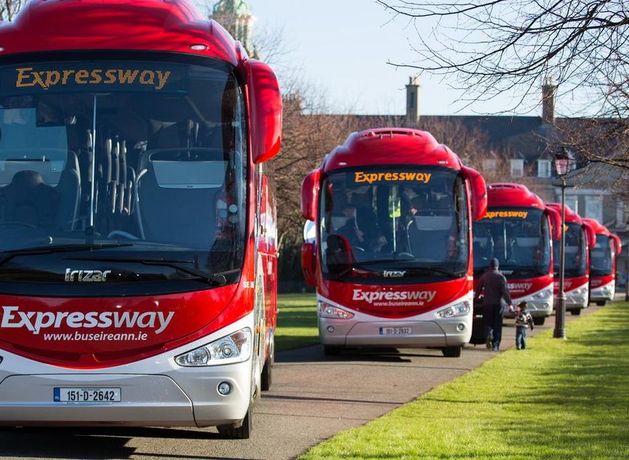World
Fares increase on bus, rail and Luas services in first phase of NTA overhaul

Short journey fares on Luas and Dublin Bus services increased on Sunday while rises on Iarnród Eireann services come into effect on Monday.
Leap Card fares have risen from €1.30 to €1.50, while cash fares are up from €1.70 to €2. This means Leap Card users will now pay 15pc more, while those paying in cash will pay 17.5pc more.
The NTA has said the increases had been brought in as part of a balancing of public transport fares and that some passengers had been overcharged on certain routes while others had been paying too little.
A new flat €1.50 Leap Card charge will apply on regional bus services in towns including Athlone, Balbriggan, Carlow, Clonmel, Drogheda, Dundalk, Kilkenny, Navan and Sligo. The cash charge for these bus services will be €2. Commuters in towns such as Athlone and Carlow were previously paying €1.10 and €1.35.
“Cash period” tickets for Luas and rail services in Dublin – paper tickets allowing multiple trips or multiple day travel – have been discontinued, with passengers being encouraged to make the switch to Leap Cards.
Increases across the public transport network were first announced in January as part of a phased plan for fares in 2024. NTA chief executive Anne Graham said the changes aimed to address anomalies in the current fare system.
No change will be made to the TFI 90-minute fare, charging Leap Card users €2 and allowing free transfer between Luas, Dublin Bus, Dart, commuter rail and Go-Ahead Ireland services.
The 90-minute fare had been a huge success, the NTA said. “It has also contributed to the increase in passenger numbers recorded across the city’s network.”
Phase two of the fare overhaul will take effect later this year and includes “a significant reduction” in Leap Card multimodal caps and Leap travel credit being brought in at rail stations in the Dublin commuter area.
Changes to fares would “aim to make fares more equitable and easy to understand,” the NTA said.
Fares will be judged on a “cost per kilometre travelled” basis, measured by the distance between the start and end of the journey as the crow flies.
Dublin and the surrounding counties will get the changes first before they are extended across the rest of the country during the year.
Two new zones will be brought in around Dublin and the commuter counties, a Dublin City Zone stretching around 23km from the city centre and a Dublin Commuter Zone that extends out to 50km.
The new zones will replace the old Short Hop Zone applied by Irish Rail and the Eastern regional fare zone applied by Bus Éireann.
“Overall, the fares changes are not projected to increase fare revenue but represent a rebalancing of fares so that they are fairer and more consistent across the board,” the NTA said in its announcement.
Phase two of the plan is expected to be in place by the end of September.










